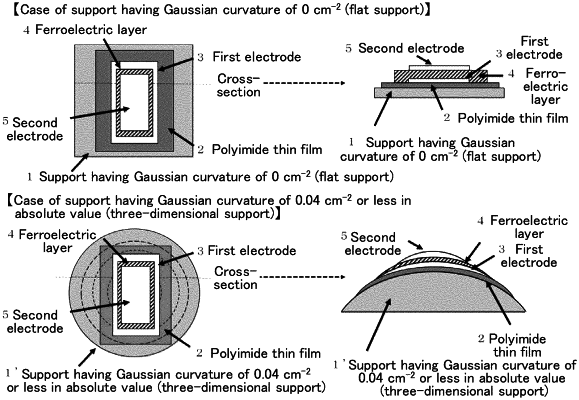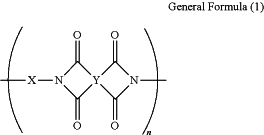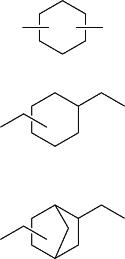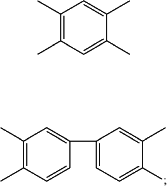| CPC H03K 17/964 (2013.01) [C08G 73/1082 (2013.01); H10N 30/302 (2023.02); H10N 30/857 (2023.02)] | 14 Claims |

|
1. A tactile sensor, comprising:
a first electrode printed on a surface of a polyimide thin film having a constituent unit represented by a general formula (1) below, the polyimide thin film having a glass transition temperature of 250° C. or higher and 310° C. or lower, a tensile strength of 250 MPa or less, an elongation rate of 30% or less, a total light transmittance of 80% or more, and a polar component of surface free energy in the range of 1.5 to 10 mJ/m2:
 wherein X is at least one member selected from the group consisting of the following alicyclic groups:
 and
wherein Y is at least one member selected from the group consisting of the following aromatic groups:
 a ferroelectric layer printed so as to cover the first electrode; and
a second electrode printed so as to be superposed with the first electrode with the ferroelectric layer therebetween.
|